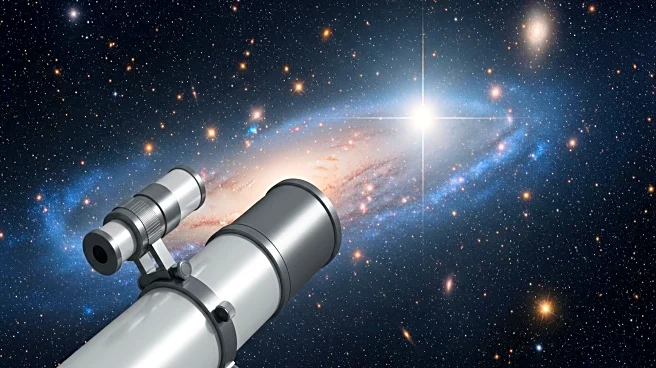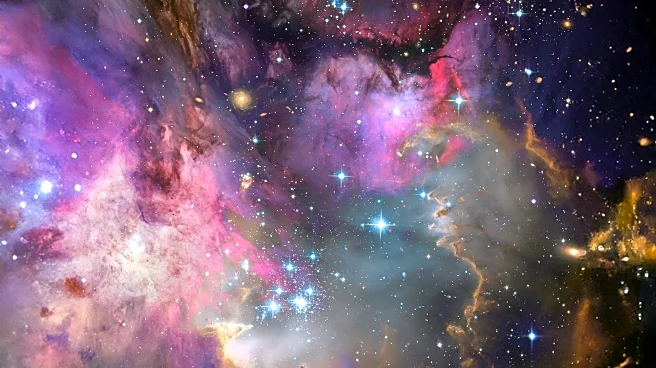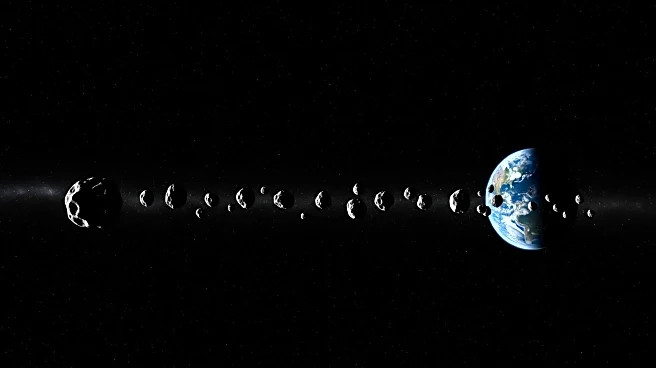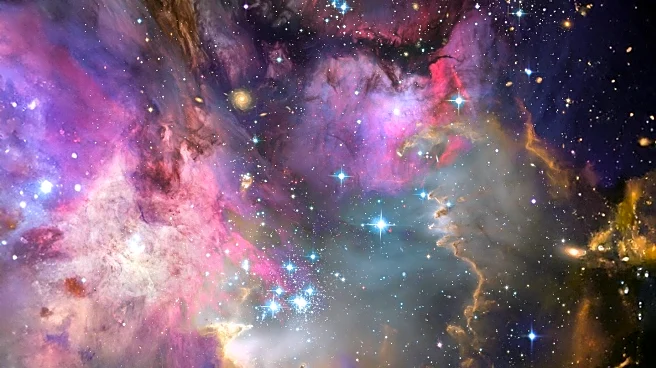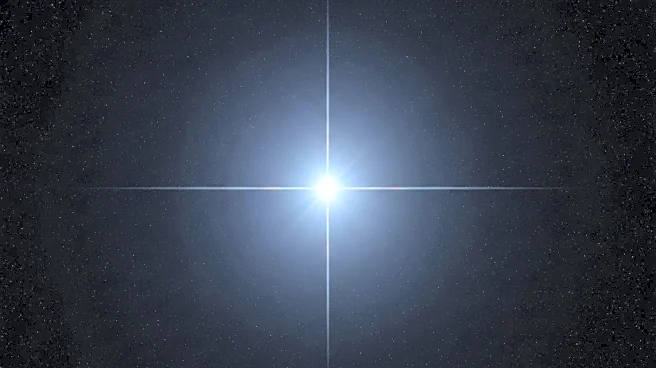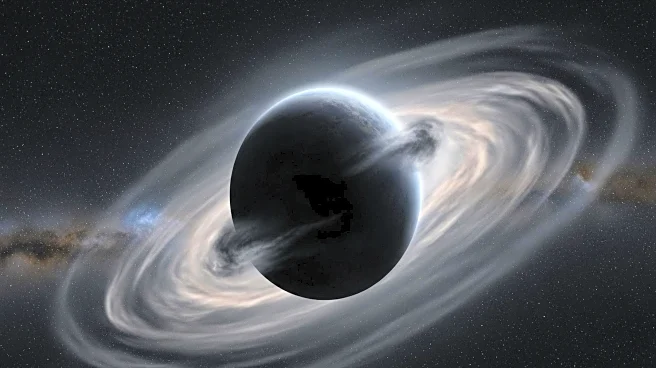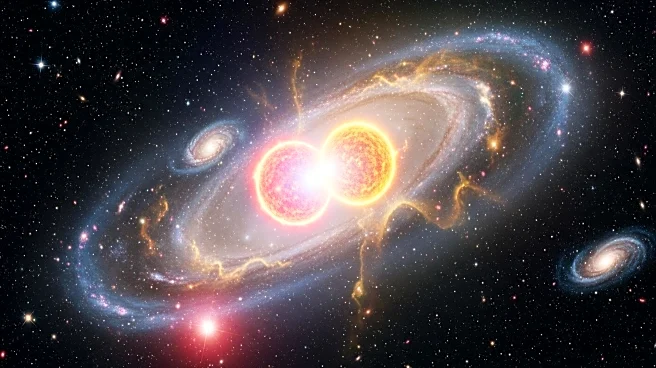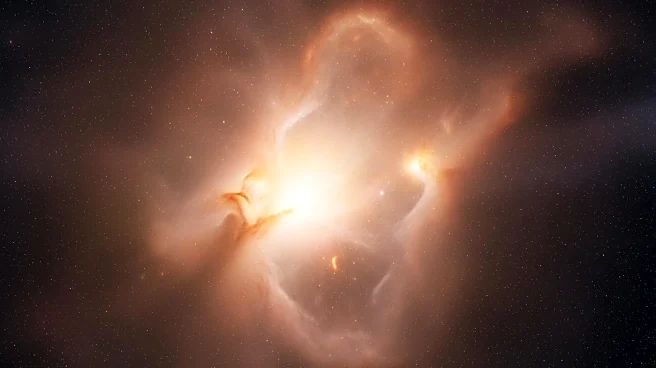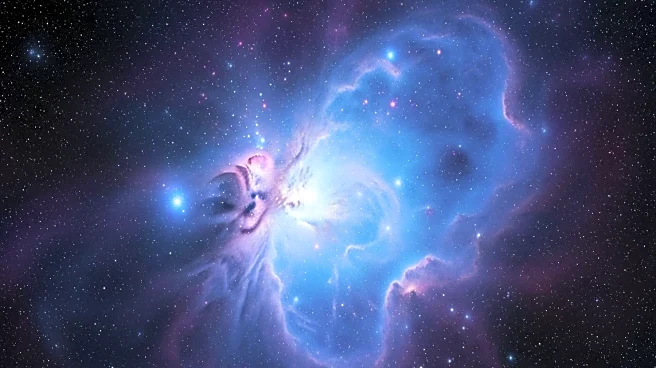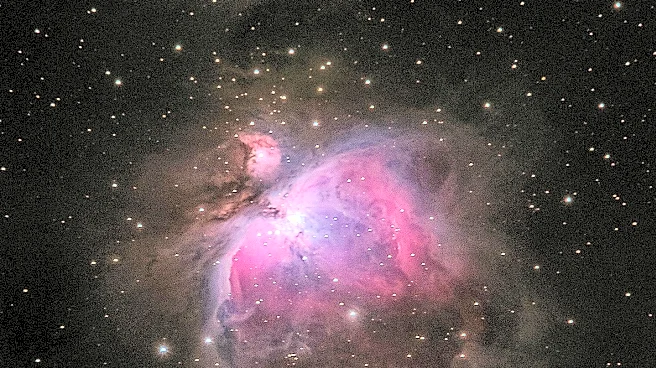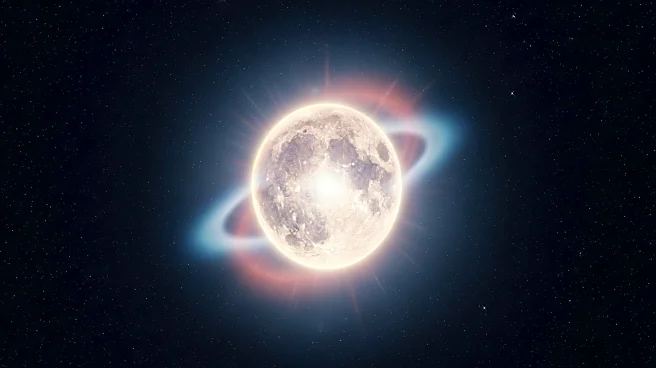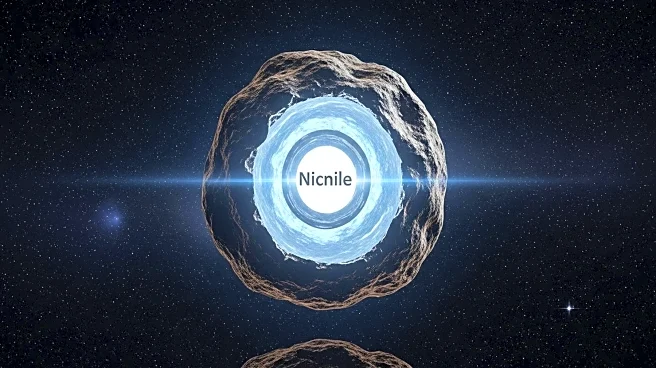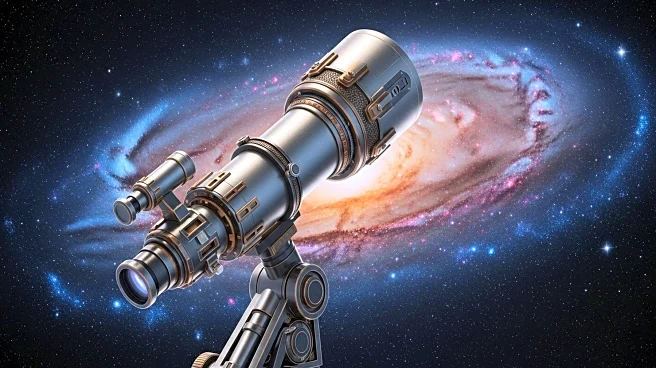What is the story about?
What's Happening?
Astronomers have identified a star in the Large Magellanic Cloud, SDSS J0715-7334, with the lowest metal content known in the universe. This star, considered nearly pristine, is thought to be a descendant of the universe's earliest stars, formed from hydrogen and helium after the big bang. The star's low levels of iron and carbon suggest it may have formed differently from other near-pristine stars, offering clues about the cooling processes in different cosmic environments.
Why It's Important?
The discovery of SDSS J0715-7334 provides valuable information about the formation and evolution of stars in the early universe. By studying its composition, astronomers can gain insights into the processes that shaped the first stars and the subsequent generations. This research contributes to our understanding of cosmic history and the development of galaxies, potentially influencing future studies in stellar archaeology.
Beyond the Headlines
The star's unique characteristics challenge existing theories about star formation and cooling mechanisms. By exploring alternative explanations for its formation, scientists may uncover new pathways for understanding cosmic evolution. This discovery highlights the complexity of the universe and the ongoing quest to unravel its mysteries.
AI Generated Content
Do you find this article useful?
